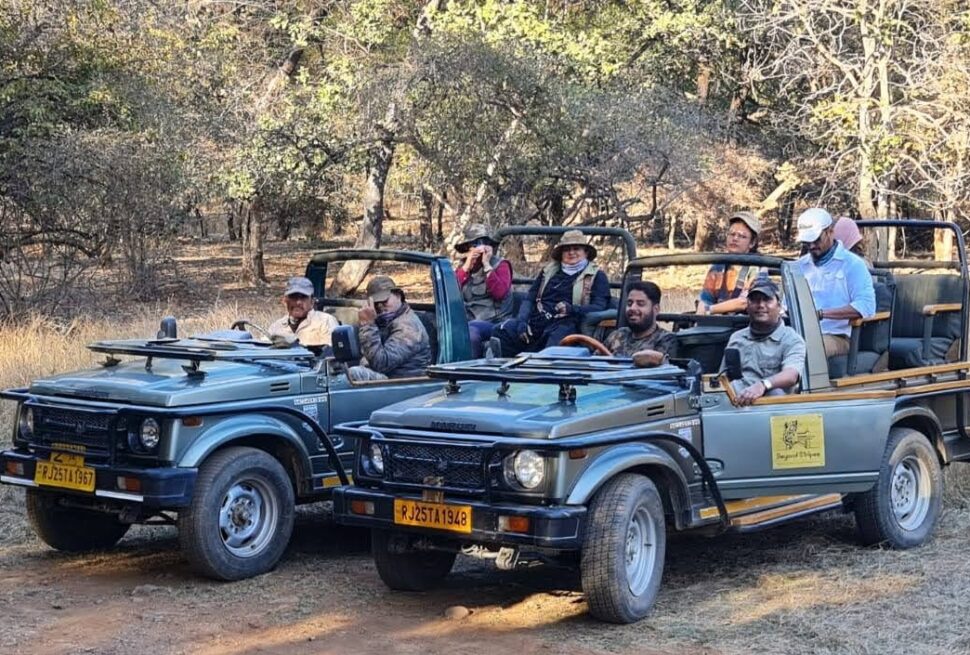Introduction to the Ranthambore Reserve
Nestled in the heart of Rajasthan, India, the Ranthambore National Park stands as a testament to the unique coexistence of wildlife and history. This protected reserve, encompassing nearly 400 square kilometers of pristine wilderness, offers a captivating blend of ancient ruins, diverse flora, and most notably, the majestic Bengal tigers that roam its expanse.
Overview of the Ranthambore National Park
Ranthambore National Park is a UNESCO World Heritage Site and one of India’s most renowned wildlife sanctuaries. Beyond its rich biodiversity, the park’s picturesque landscape of lakes, hills, and ancient forts provides a stunning backdrop for capturing the essence of nature.
Historical Significance of the Reserve
Steeped in history, Ranthambore was once a royal hunting ground for Maharajas. The park’s historical ruins, most notably the Ranthambore Fort, add an extra layer of allure to its natural beauty.
The Allure of Ranthambore’s Majestic Tigers
The true stars of Ranthambore are undoubtedly its Bengal tigers. The opportunity to witness these magnificent creatures in their natural habitat draws wildlife enthusiasts and photographers from around the globe. To capture the majesty of Ranthambore’s tigers through your lens, you’ll need more than just the right equipment; you’ll need a deep understanding of wildlife photography.
Understanding the Wildlife Photography Basics
Essential Gear for Tiger Safari Photography
To embark on a successful tiger safari photography adventure, you’ll need the right gear. This includes a camera with a telephoto lens, a sturdy tripod, and protective gear for your equipment.
Mastering the Art of Composition
Composition is the backbone of captivating wildlife photography. Learn about the rule of thirds, leading lines, and framing to create visually engaging images.
Importance of Lighting and Exposure
Lighting is crucial in photography. Understanding how to work with natural light and adjust your camera’s exposure settings will greatly enhance the quality of your tiger safari shots.
Preparing for a Tiger Safari in Ranthambore
Researching the Best Time to Visit
Timing is everything in wildlife photography. Research the best seasons and months for tiger sightings in Ranthambore to increase your chances of capturing these elusive creatures.
Choosing the Right Safari Zone for Photography
Ranthambore is divided into multiple safari zones, each with its own unique offerings. Selecting the right zone is essential for optimizing your photography opportunities.
Securing Permits and Booking a Safari
Obtaining the necessary permits and booking a safari well in advance is vital, as Ranthambore has a limited number of visitors allowed each day.
Techniques for Capturing Tigers in Their Natural Habitat
Patience and the Art of Waiting
Wildlife photography often requires patience. Learn to observe and wait for the perfect moments to capture tigers in their natural behaviors.
Maximizing Chances of Spotting Tigers
Understanding the movements and territories of tigers will help you position yourself for the best shots. Local guides and trackers can be invaluable resources in this regard.
Understanding Tiger Behavior and Movement Patterns
Tigers have distinct behaviors and movement patterns. Familiarize yourself with these to anticipate their actions and capture remarkable shots.
Composition and Framing Tips for Tiger Safari Photography
Rule of Thirds and Leading Lines
Applying the rule of thirds and using leading lines will add depth and visual interest to your tiger safari photos.
Incorporating the Surroundings to Tell a Story
Include the natural surroundings in your shots to provide context and create a narrative around the tigers’ lives.
Capturing the Details: Close-Ups and Environmental Portraits
Don’t forget to zoom in and capture the intricate details of tigers. Environmental portraits can convey a sense of the tigers’ habitat.
Mastering Wildlife Photography Settings for Tigers
Choosing the Ideal Camera Settings
Learn to adjust your camera settings, including shutter speed, aperture, and ISO, for the best results in various lighting conditions.
Working with Different Focal Lengths
Understanding how different focal lengths affect your images will allow you to adapt to different shooting scenarios.
Techniques for Capturing Tigers in Motion
Tigers are agile and fast-moving creatures. Master techniques for capturing them in motion, such as panning and tracking.
Handling Challenges and Risks in Tiger Safari Photography
Dealing with Low-Light Situations
Low-light situations can be challenging. Know how to manage your camera settings and equipment for optimal results.
Addressing Potential Safety Concerns
Safety should always come first in wildlife photography. Be aware of potential risks and follow safety guidelines provided by the park authorities.
Respecting Wildlife Ethics and Conservation Regulations
Ethical wildlife photography is essential for conservation efforts. Respect park regulations and maintain a safe distance from the animals to avoid disturbing their natural behaviors.
Post-Processing Tips for Perfecting Tiger Safari Photos
Selecting the Best Images for Editing
Not every shot will be a winner. Learn how to choose the best images for editing and discard the rest.
Enhancing Colors and Sharpness
Post-processing can elevate your images. Discover techniques for enhancing colors, sharpening details, and creating visually appealing photographs.
Showcasing Your Tiger Safari Photography Online
Sharing your work with the world is an important aspect of photography. Learn how to create an online portfolio and engage with photography communities.
Connecting with Tiger Safari Photography Communities
Importance of Sharing Your Work
Sharing your tiger safari photography allows you to showcase your talent, gain feedback, and inspire others.
Engaging with Fellow Photographers and Enthusiasts
Join photography communities, forums, and social media groups to connect with fellow photographers, share experiences, and learn from one another.
Participating in Contests and Exhibitions
Competing in photography contests and exhibitions can provide recognition for your work and opportunities for growth as a wildlife photographer.
In conclusion, capturing the majesty of Ranthambore’s tigers through your lens is a rewarding endeavor that requires dedication, knowledge, and patience. Armed with the right equipment, techniques, and ethical considerations, you can create stunning photographs that not only document the beauty of these creatures but also contribute to their conservation.

